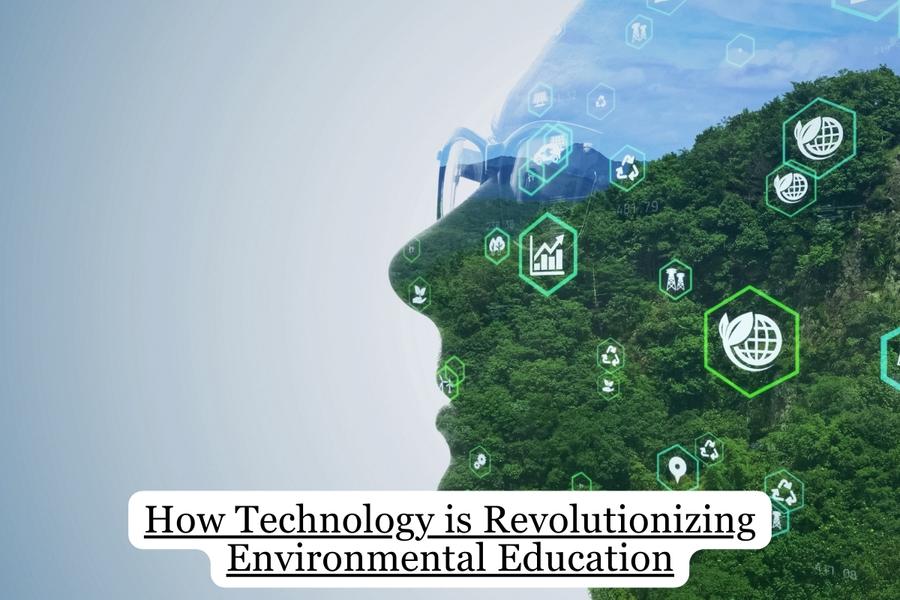EdTech Meets Environmental Education: How Technology is Transforming Green Learning
In an age where both technology and environmental preservation are at the forefront of societal priorities, the intersection of EdTech and environmental education is creating groundbreaking opportunities. Schools, universities, and organizations worldwide are leveraging advanced educational technology to foster environmental awareness, promote sustainability, and empower learners to become environmental stewards. This article explores how EdTech is transforming green learning, delves into its benefits, provides practical strategies, and highlights inspiring real-world examples.
Why Combine EdTech and Environmental Education?
Environmental education is essential in equipping individuals with the knowlege,skills,and values necessary to protect our planet. Though, traditional teaching methods sometimes fall short in engaging digital-native learners. EdTech tools—ranging from virtual reality (VR) simulations to gamified eco-challenges—are reshaping how environmental concepts are taught. This synergy creates a deeper impact, making climate change, conservation, and sustainability concepts more accessible, interactive, and actionable.
- Enhanced engagement: Interactive platforms keep students motivated.
- Anywhere, anytime learning: Digital tools break the barriers of geography and schedule.
- Personalized education: Adaptive learning caters to diverse student needs and pace.
The Digital Toolbox: How EdTech Empowers Green Learning
The integration of technology in environmental education offers educators a rich toolkit. Here are some key EdTech innovations shaping sustainable learning:
Virtual Reality (VR) and Augmented Reality (AR)
- Immersive environmental Field trips: VR allows students to explore rainforests, coral reefs, and endangered ecosystems without leaving the classroom.
- AR-Based Interactive Lessons: Overlays digital data on real-world objects, making complex data about biodiversity or climate change tangible and relatable.
Gamification and Eco-Challenges
- Educational Games: Apps like “Eco Empire” and “Earth Ranger” engage students through quests and puzzles tied to ecological principles.
- Competitive Learning: Leaderboards, badges, and real-time feedback incentivize sustainable behaviors.
Online Learning Platforms
- MOOCs and eCourses: Massive Online Open Courses on climate science, recycling, or conservation are accessible globally.
- Interactive Modules: Platforms like Coursera or EdX offer on-demand, multimedia-rich lessons on environmental sustainability.
Sensor Technology and Data Analytics
- smart School Gardens: IoT sensors monitor soil, sunlight, and water use, helping students learn sustainable agriculture hands-on.
- Real-Time Data: Analyze air quality, waste output, or energy consumption, promoting evidence-based decision-making.
Collaborative Cloud Tools
- virtual Classrooms: encourage collaboration between students from different regions, sharing insights on local sustainability issues.
- Global Projects: participate in UNESCO or WWF research initiatives via cloud platforms, fostering global citizenship.
Benefits of Tech-Driven Environmental Education
Integrating EdTech in environmental education offers numerous advantages for students, teachers, and the planet.
- Increased Awareness and Empathy: interactive storytelling and VR field trips make environmental issues real and personal.
- Measurable Outcomes: data from apps and sensors can track sustainable behavior changes and learning progress.
- Scalable impact: Online resources and global networks allow educators to reach diverse audiences.
- Reduced Carbon Footprint: Digital classrooms minimize the need for physical materials and travel.
Case Studies: success Stories from Around the Globe
Let’s look at how organizations and institutions are leveraging EdTech for environmental education with measurable results.
The world Wildlife Fund’s Wild Classroom
Wild Classroom is a free digital toolkit featuring lesson plans, videos, and virtual expeditions. It enhances teachers’ ability to inspire K-12 learners about global wildlife conservation, even in remote or underfunded schools.
Eco-Schools International
With more than 59,000 member schools, Eco-Schools uses an online platform for students to audit their campuses’ energy use, waste generation, and water consumption. Data-driven projects encourage students to brainstorm and implement real-world sustainability solutions.
national Geographic: Learning through VR
National Geographic offers immersive VR experiences that transport students to threatened habitats, empowering them to explore the impacts of climate change firsthand while fostering environmental literacy.
Classcraft’s Green Missions
The popular gamified learning platform, Classcraft, includes missions, quests, and challenges centered on biodiversity, recycling, and ecological stewardship, rewarding collaborative problem-solving.
practical Tips for Integrating EdTech into Green Learning
Ready to enhance your environmental curriculum with technology? Here are some practical tips for educators, administrators, and parents:
- Start Small: Integrate interactive quizzes, videos, or eco-themed games into existing lessons.
- Leverage Open Resources: Explore free courses, toolkits, and VR content provided by reputable organizations.
- Promote Collaborative Projects: Use EdTech platforms for group research,shared writing,or global classroom exchanges.
- Track Sustainability Goals: Use apps or digital portfolios to document and reflect on eco-friendly actions and outcomes.
- Prioritize Digital Citizenship: Teach students about eco-friendly online behavior, such as responsible e-waste disposal and energy-saving habits.
- Stay Updated: Join EdTech and environmental education networks to keep pace with the latest tools and trends.
First-Hand Outlook: A Teacher’s Experience
“Bringing technology into my environmental science class was daunting at first, but the rewards were quickly evident. Students who were once disengaged became captains of their own digital sustainability projects. We used VR headsets to ‘visit’ melting ice caps, and sensor kits to monitor our school garden’s water use. The hands-on, immersive experiences not only boosted learning outcomes but also sparked genuine excitement about making a green difference—at school and beyond.”
– Jamie L.,High School Science Teacher
Overcoming Challenges in Tech-Driven environmental education
While EdTech in green education offers vast potential,it’s vital to address common obstacles:
- Accessibility: Ensure equitable access to devices and internet connectivity,especially in underserved regions.
- Teacher Training: Invest in ongoing professional development for educators to maximize technology’s impact.
- Privacy and Security: Choose platforms with strong data protection,especially when involving young learners.
- Balancing screen Time: Blend digital resources with outdoor, hands-on environmental experiences.
Conclusion: The Future is Green and Digital
The fusion of EdTech and environmental education is a powerful catalyst for fostering the next generation of eco-conscious citizens. By embracing interactive technologies and innovative teaching strategies, educators can inspire meaningful action for a sustainable future. Whether through virtual habitats, gamified challenges, or global collaboration, technology is transforming green learning—in classrooms, communities, and beyond. Equip your learners for the environmental challenges of tomorrow by integrating the best of both worlds—technology and stewardship—today.

